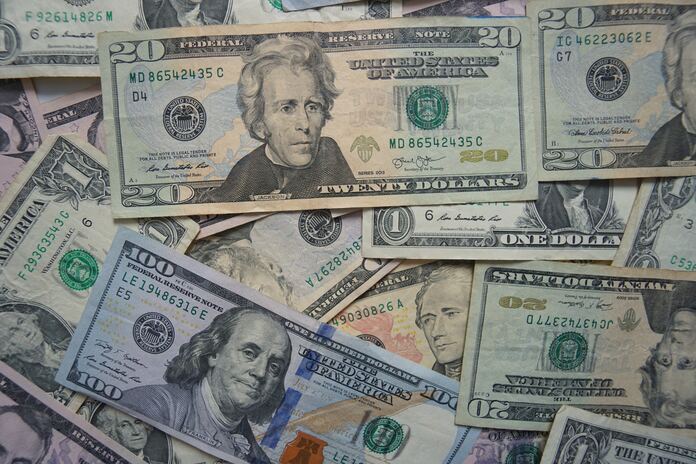Jackson Hole Conference
Federal Reserve Chair Jerome Powell’s recent speech at the highly anticipated Jackson Hole conference underscored the potential need for additional interest rate hikes to address the ongoing strength of the U.S. economy. Powell emphasized the unexpected rapid pace of economic expansion and resilient consumer spending, factors that could perpetuate inflationary pressures. The Fed Chair also reiterated the central bank’s commitment to maintaining an elevated key interest rate until inflation subsides to the targeted 2%.
“We remain watchful for indications that the anticipated cooling of the economy is not materializing as projected,” Powell stated. “We stand prepared to implement further rate hikes if deemed appropriate, and our policy will remain restrictive until we are confident in the sustainable reduction of inflation toward our objective.”
Powell’s remarks, delivered at the annual conference of central bankers, highlighted the complexities inherent in the economic landscape and the intricate nature of the Fed’s responses. This contrasted sharply with his statement from the previous year’s Jackson Hole conference, in which he starkly warned Wall Street about the central bank’s intent to continue aggressive rate hikes to curb escalating prices.
Additionally, Powell indicated that the Fed believes its current key interest rate is sufficiently high to moderate economic growth, employment, and inflation. However, he acknowledged the uncertainty surrounding the precise level at which borrowing costs can effectively restrain the economy. This uncertainty underscores the challenge of gauging the impact of the Fed’s policies on reducing inflation.
As a consequence, Powell expressed the Fed’s intention to approach future decisions cautiously, carefully considering whether to implement further tightening or maintain the policy rate while awaiting additional data.
Since Powell’s previous Jackson Hole address last year, the Fed has elevated its benchmark rate to a 22-year peak of 5.4%. Following its zenith of 9.1% in June 2022, inflation has decelerated to 3.2%, although it remains above the Fed’s 2% target.
Powell acknowledged the decline in inflation from its peak, labeling it as “positive news.” Notably, consumer prices, excluding volatile food and energy categories, have also started to ease.
“However, it takes more than just two months of positive data,” he cautioned, “to foster confidence in a sustained reduction of inflation toward our goal. While the decline from the peak is encouraging, inflation remains at elevated levels.”
The impact of markedly higher loan rates, resulting from the Fed’s series of rate hikes, has led to challenges for individuals and businesses in affording homes, vehicles, and expansions. Simultaneously, costs for services such as rent and dining out have continued to rise. “Core” inflation, excluding food and energy prices, has remained elevated, despite the Fed’s string of 11 rate hikes initiated in March 2022.
Nevertheless, the broader economy has demonstrated resilience. Employment remains robust, defying predictions of widespread job cuts and a recession triggered by rate spikes. Consumer spending maintains healthy growth, while the unemployment rate mirrors last year’s level at 3.5%, just slightly above a historical low.
In June, during the Fed’s quarterly projections, policymakers anticipated a single rate increase for the year. However, this forecast could shift given recent government data reflecting milder inflation trends. The Fed officials will revise their rate projections during the upcoming meeting on September 19-20.
Many economists have altered their forecasts regarding a potential U.S. recession. Optimism regarding the Fed’s ability to orchestrate a challenging “soft landing” has grown—a scenario in which inflation moderates without inducing a sharp economic downturn.
Anticipating a soft landing and even accelerated growth, many financial market traders have influenced an increase in bond yields, particularly the 10-year Treasury note, which significantly affects long-term mortgage rates. Consequently, the average 30-year fixed mortgage rate has surged to 7.23%, marking a 22-year peak. Elevated auto loan and credit card rates could dampen borrowing and consumer spending, vital components of economic vitality.
Some economists argue that these higher long-term rates could alleviate the need for further Fed hikes by tempering growth and thus mitigating inflation pressures. In fact, many experts speculate that the Fed’s July rate increase might be its last.
However, even if the Fed refrains from further hikes, the central bank may feel compelled to sustain its elevated benchmark rate to curb inflation. This introduces the new challenge of maintaining high interest rates indefinitely, risking economic weakening and potential downturn. Additionally, it could imperil banks by diminishing the value of their bond holdings—a dynamic that contributed to the failure of several major lenders last spring.
Nonetheless, as the economy maintains its trajectory, the possibility emerges that the post-pandemic landscape has transitioned to a higher-growth phase, capable of expanding even in the face of elevated borrowing costs.
Featured Image: Unsplash © Blogging Guide









